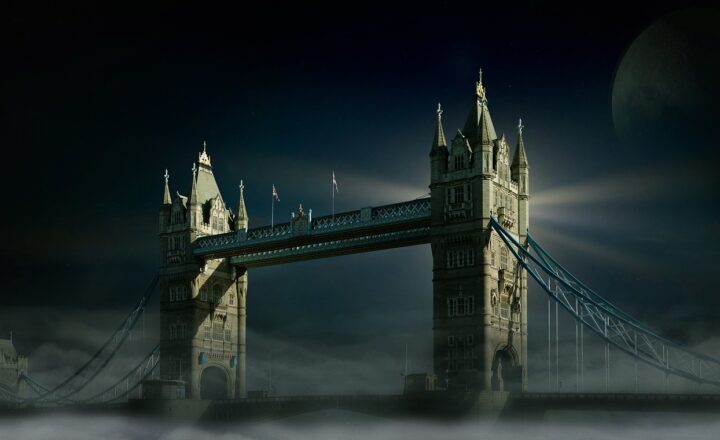The Strangest and Most Creative Bridges Built by Ancient Engineers That Still Stand Today
November 17, 2024

Bridges are not just mere structures that connect two points; they are testaments to human ingenuity and engineering prowess. Throughout history, ancient engineers have constructed remarkable bridges that have withstood the test of time, often using techniques and materials that continue to inspire modern architecture. In this article, we will explore some of the strangest and most creative ancient bridges that still stand today, unraveling their fascinating stories and the remarkable engineering feats behind them.
1. The Incredible Hanging Bridge of Ojuela, Mexico
Nestled in the picturesque terrain of Durango, Mexico, the Ojuela Bridge is a stunning suspension bridge that stretches 1,000 feet across a canyon. Built in the late 19th century to connect the mining town of the same name to nearby areas, the bridge features intricately woven cables made of steel that hold the wooden planks in place. Though constructed relatively recently compared to other ancient structures, the Ojuela Bridge draws inspiration from ancient engineering techniques, evoking a sense of wonder and creativity in its design.
This bridge stood the test of time and was restored in the early 2000s, allowing visitors to marvel at its architectural beauty and stunning views of the surrounding landscape. Today, it serves as a reminder of the innovative spirit of engineers throughout history, as well as a popular attraction for thrill-seekers.
2. The Pont Du Gard – An Ancient Aqueduct and Bridge Combined
Located in the south of France, the Pont Du Gard is a UNESCO World Heritage Site dating back to the first century AD. Originally built as an aqueduct to transport water to the Roman city of Nîmes, this impressive structure is a bridge that showcases ancient Roman engineering brilliance. The aqueduct spans over 900 feet and stands approximately 160 feet tall, composed of precisely cut limestone blocks, requiring no mortar for stability.
What makes the Pont Du Gard extraordinary is its dual function: while it facilitated the distribution of water, it also served as a bridge over the Gardon River. The structure reflects the importance of water management in ancient Roman society and remains a vital symbol of Roman engineering that influences modern architects and engineers today.
3. The Unique Alcántara Bridge, Spain
The Alcántara Bridge, built by the Romans in the year 105 AD, spans the Tagus River in southwestern Spain. This magnificent stone bridge measures 194 meters in length and towers 45 meters above the water. Known for its striking architecture, the Alcántara Bridge has six arches, with the central arch being the largest. It was originally built to connect the territories of the Roman Empire and served as a vital crossing point for military and trade routes.
Its remarkable design features a robust, symmetrical form with decorative carvings that depict its historical significance. The bridge is not just a transportation route; it also acts as a powerful symbol of Roman engineering mastery, integrating functionality with artistry that has persisted through centuries.
4. The Ancient Bridge of Mostar, Bosnia and Herzegovina
The Stari Most, or Old Bridge, in Mostar dates back to the 16th century when it was built by the Ottoman Empire. This iconic stone arch bridge spans the Neretva River, connecting the two sides of Mostar. The Stari Most was an engineering marvel of its time, constructed without the use of modern machinery. Its elegant design, featuring a 28-meter span and a distinctive central arch, reflects a blend of Islamic and Mediterranean architecture.
Though the bridge sustained severe damage during the Bosnian War in the 1990s, it was reconstructed in 2004, preserving its historical essence. Today, it stands not only as an architectural masterpiece but also as a symbol of resilience and unity, attracting visitors from around the globe.
5. The Kakuni Bridge, Japan
The Kakuni Bridge, located in the Yoshino region of Japan, is a prime example of how nature and engineering can coexist harmoniously. Steeped in history, the bridge is said to have been built in the 13th century by a monk who sought to facilitate travel to sacred sites in the area. Constructed from wood and utilizing natural materials, the bridge spans a stunning ravine and offers breathtaking views of the surrounding wilderness.
What makes the Kakuni Bridge stand out is its incorporation of traditional Japanese architectural philosophy, where respect for nature is paramount. Its tranquil presence amidst the lush green landscape invites contemplation and harmony, making it a cherished cultural landmark in Japan.
6. The Rakotzbrücke – The Devil’s Bridge, Germany
Perhaps one of the most uniquely designed bridges, the Rakotzbrücke, or Devil’s Bridge, is located in Kromlau, Germany. Built in the 19th century, this semi-circular stone bridge features an arch that perfectly reflects onto the water below, creating a stunning optical illusion of a complete circle. Legend has it that the bridge was built with the help of the devil, hence the name, as it seemed impossible for humans to create such a perfect form.
The Rakotzbrücke was constructed to blend seamlessly with its picturesque surroundings; its surreal form and the enchanting forest enhance its mythical aura. Today, it stands as a beloved tourist destination, reminding us of the beauty and mystery of ancient engineering designs.
Conclusion
Ancient engineers excelled at creating bridges that not only served practical purposes but also engaged our imagination. From the breathtaking designs of the Pont Du Gard to the whimsical Rakotzbrücke, these structures highlight the creativity, resourcefulness, and artistry of past civilizations. As we admire these engineering marvels, we gain insight into the cultural and historical significance they hold, reminding us that while times may change, the marvel of engineering remains timeless.
Whether you are an architecture enthusiast, a history buff, or simply someone who enjoys exploring the wonders of the world, these ancient bridges offer a glimpse into the extraordinary abilities of human creators that continue to inspire generations today.








